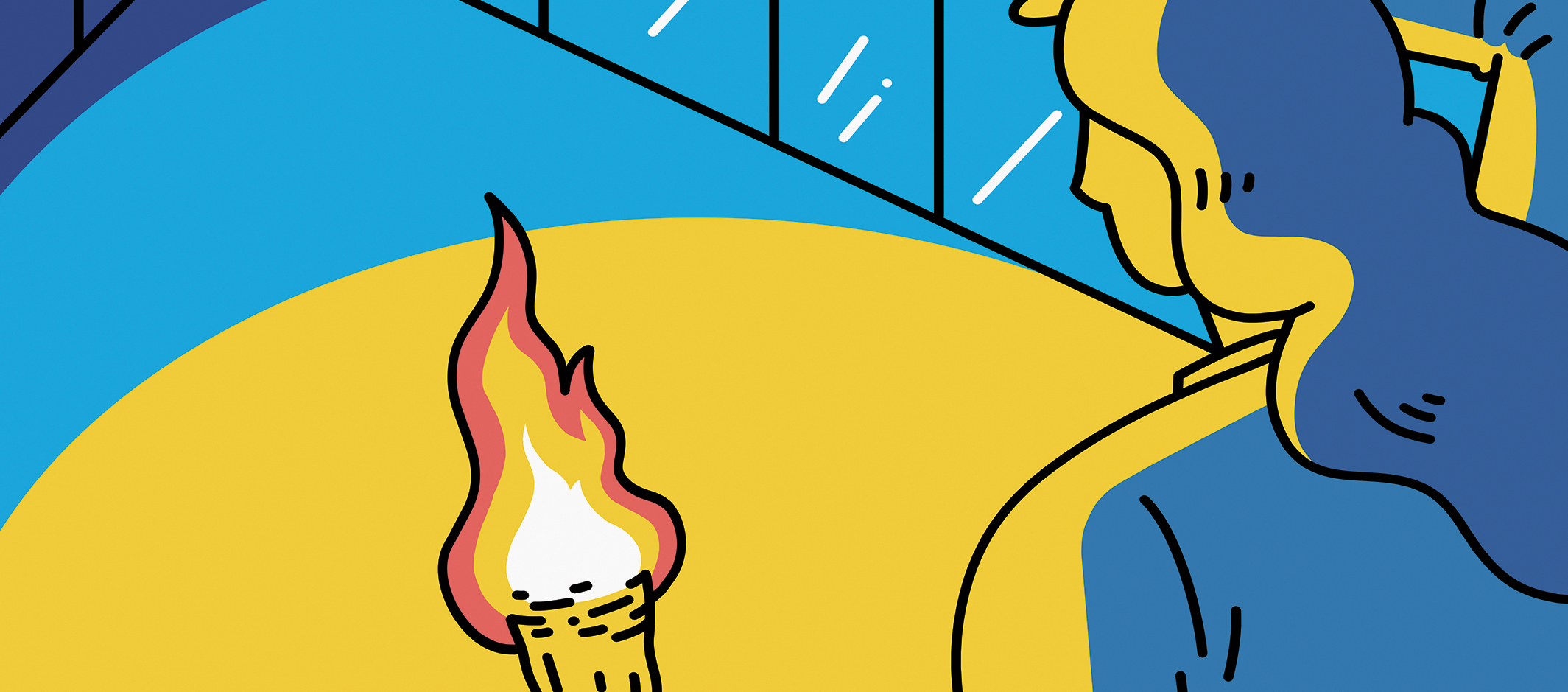The first time Sara Erskine stepped foot in the PATH, she got hopelessly lost. The year was 2000, and she had travelled to Toronto from Kingston to interview for several articling positions. “It was hot, and it was the summer,” she recalls. “I kept having to resurface to navigate by the streets.”
With 3.7 million square feet of retail space and corridors that span 30 kilometres in length, the PATH is the world’s largest underground shopping mall. Arriving late to a meeting after taking a wrong turn in this subterranean maze is a rite of passage that will be familiar to anyone who has worked in the downtown core. Over time, though, most office dwellers learn how to navigate these halls with ease.
Once Erskine began articling at McCarthy Tétrault LLP, she soon felt right at home in the PATH. After a short escalator ride underground, she could enjoy a stress-free walk to almost any Toronto landmark, while picking up her favourite blueberry scone along the way. “It’s by far the most efficient way to get around,” says Erskine, now a founding partner at the litigation boutique Weintraub Erskine Huang LLP. “And it’s the warmest way to travel in the winter.”
But the PATH offered more than a convenient way to move around. For Erskine and the broader legal community, the plethora of cafés and restaurants made it an ideal place to refuel in the middle of a chaotic workday. Before heading home, she might drop in at the bank or pick up milk and toothpaste. And she often bumped into friends and made new connections. During the COVID era, however, that vibrant culture has suffered a tragic blow.
Throughout the pandemic, Erskine never stopped commuting downtown. (Her current office is located at Bay and Richmond.) As a result, she witnessed firsthand the PATH’s transformation from a lively weekday hub to a ghost town. Restaurants and retail stores shuttered before her eyes. Easter displays, put up in March 2020, gathered dust through the summer and fall. “It felt like an apocalypse,” she says. “Everything was frozen in time.”
Workers have started to trickle back to their downtown offices, but the PATH remains a shadow of its former self. “It used to be bustling with energy as professionals scurried around the various small businesses to get errands done and make deals with clients,” says Leila Rafi, a partner in the securities group at McMillan LLP, who has started to work more regularly out of her office at Bay and Wellington. “Now, it’s eerily empty. The small businesses have been crushed.”
At Mucho Burrito in Brookfield Place, Rafi’s favourite taco restaurant, 20- to 25-minute lunchtime lineups were once the norm. The business is now shut down. Her preferred Starbucks, also in Brookfield Place, used to be so busy that Rafi would joke that it might as well be printing money. Today, it’s closed. And so, too, is the hair salon she’d regularly visit for blowouts. “I never thought I would see the PATH this way, not unless it was past midnight and before 6 a.m.,” says Rafi. “And even then, you’d usually see some folks burning the midnight oil or walking to a cab or the subway. The liveliness and community spirit is gone.”

One person watching the PATH’s transformation from the other side of the glass is David Seligman, the owner of Options for Her, a women’s clothing boutique in the TD Centre. For more than three decades, Seligman and his staff have served everyone from university students buying their first suits to lawyers and accountants updating their wardrobes for the new season. “Many of our clients have been shopping with us for 35 years,” says Seligman. “We know 90 percent of our customers by name. We know their kids. It’s always been about building relationships.”
When the pandemic hit, Seligman pivoted to an online business model, delivering clothes to clients’ doorsteps for at-home fittings. (He continued to operate his location in Yorkville, where pedestrian traffic hasn’t been nearly as hard hit.) This fall, he decided to reopen his store in the PATH. “I think it’s going to take a couple of years to get back to pre-pandemic numbers,” he says. “But I’m committed to rebuilding my business and getting it back to where it was.”
The road back to prosperity will be especially hard in certain sectors. Consider the restaurant industry. Before the pandemic, the average take-out joint enjoyed a razor-thin 4.3-percent profit margin. The slightest dip in foot traffic, or a single week of lacklustre sales, could put these businesses at risk. Unless the vast majority of workers return to the office, few cafés or lunch spots will have any chance of survival.
At least one expert is bullish on the future of the downtown core. “I don’t have a crystal ball, but I’ve been downtown pretty much every day since the pandemic hit, and I’m finally starting to see lineups at lunch again,” says Graham Smith, a senior vice-president at the commercial real-estate giant JLL. “It’s probably only 15 percent of pre-COVID levels, but it’s a nice visual indication that bodies are getting back downtown.”
In his view, an economic recovery could be complete by the last quarter of 2022. He justifies that optimism, in part, by pointing to the strong vaccination rate in Toronto. He also predicts that the mandatory vaccination policies in place at many large companies, including the biggest law firms, will make a growing number of workers feel comfortable about a return to the office.
It’s certainly true that plenty of lawyers miss the PATH of yesteryear. “I was part of a community downtown where I often ran into friendly faces and knew many of the small-business owners,” says Rafi. “There was a sense of being in it together, which was especially important with the gruelling hours for Bay Street professionals.”
Erskine, for her part, misses the ability to dart underground with a colleague to grab a quick coffee. “Those were opportunities for us to escape the office to get to know each other better,” she says. “It was a camaraderie thing. That’s what the PATH was really good at.”


